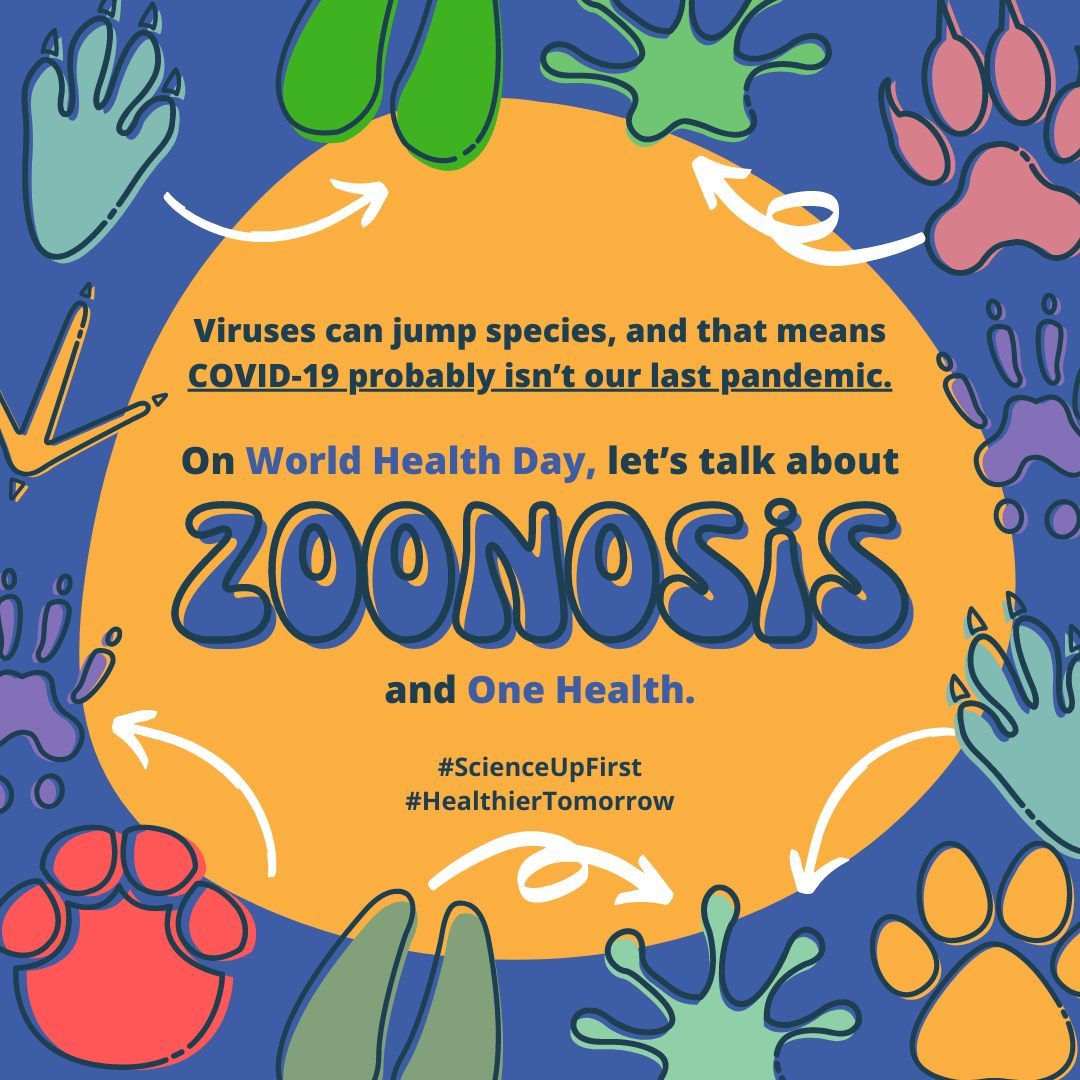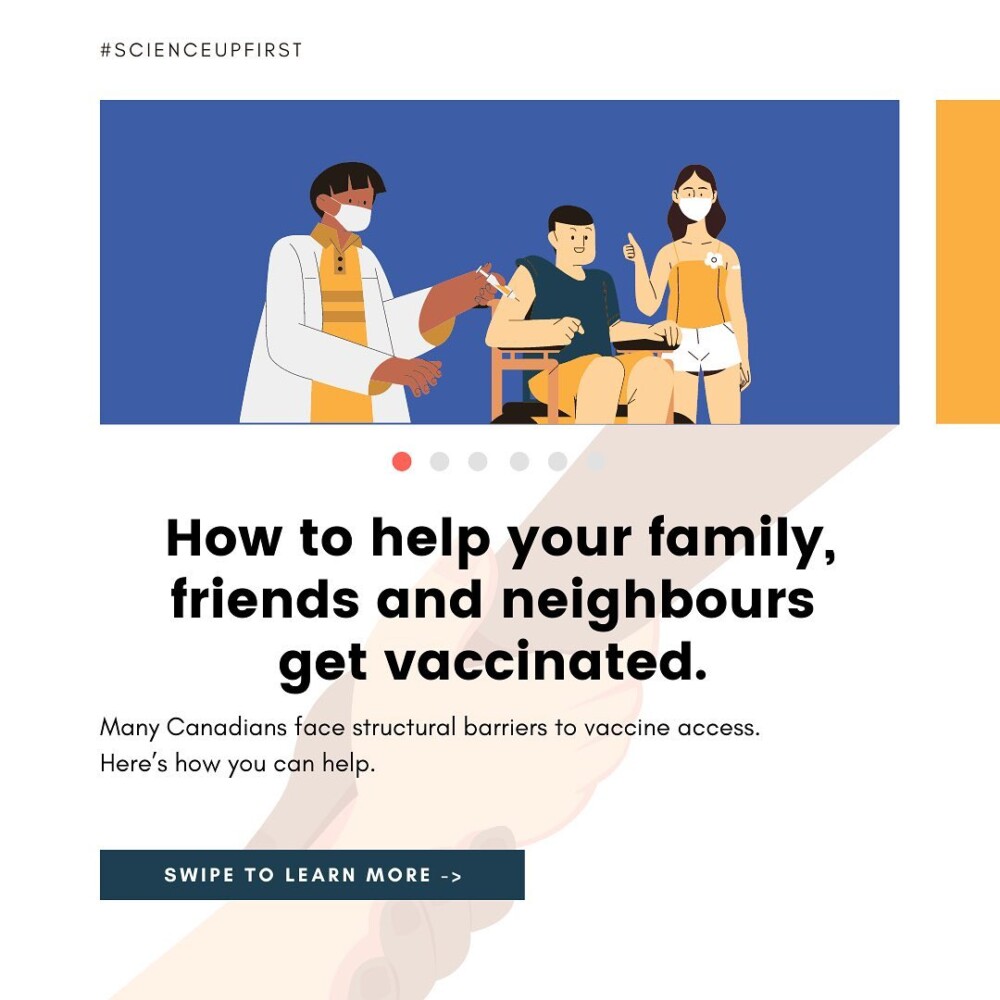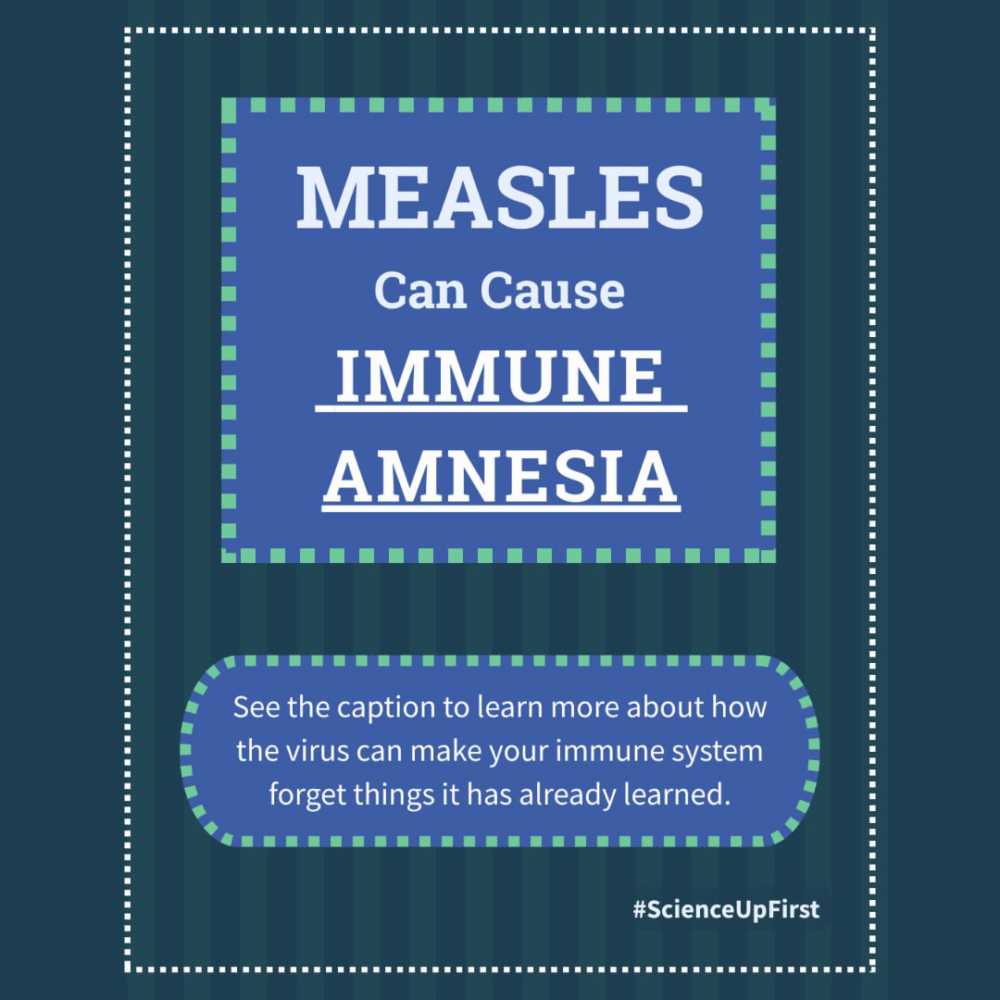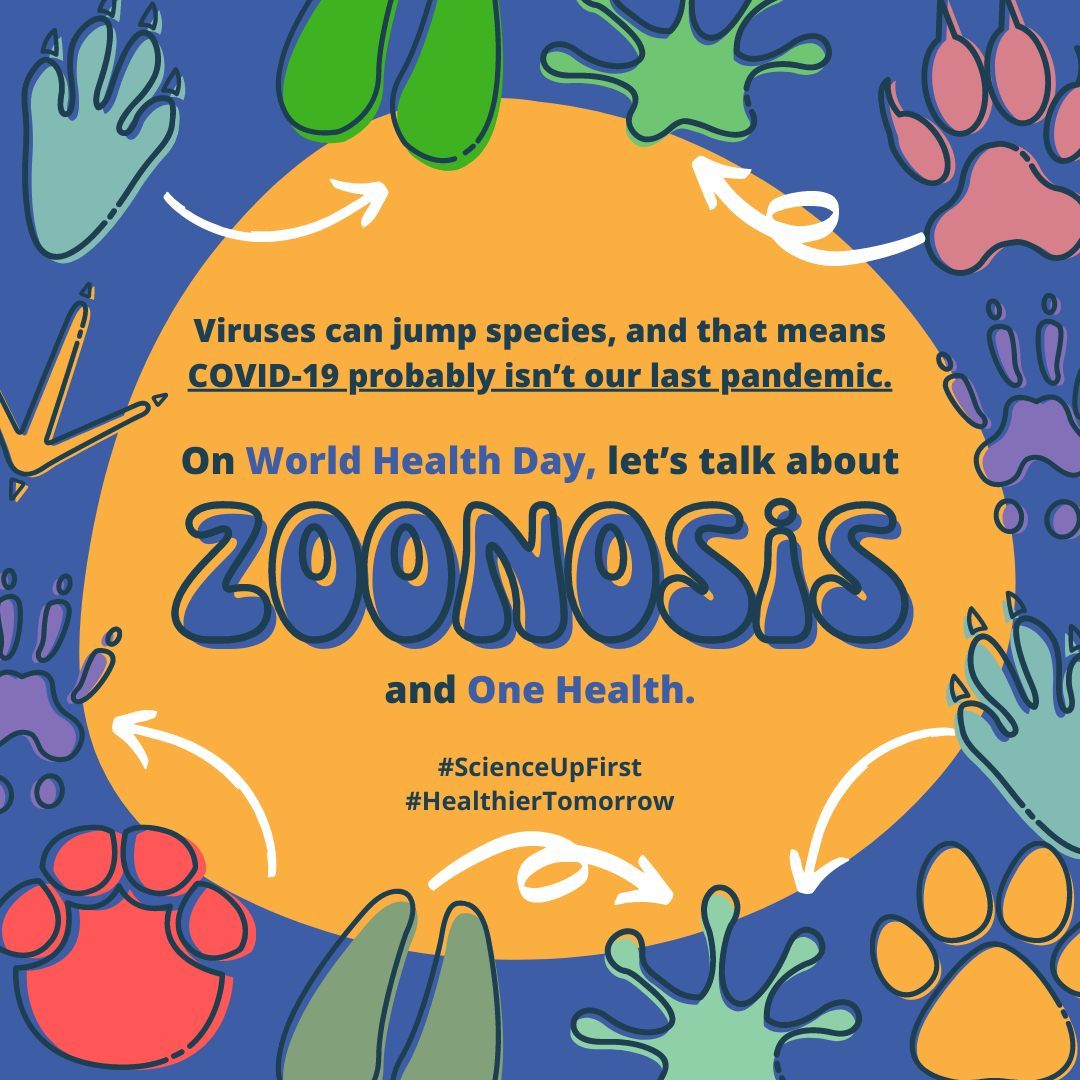
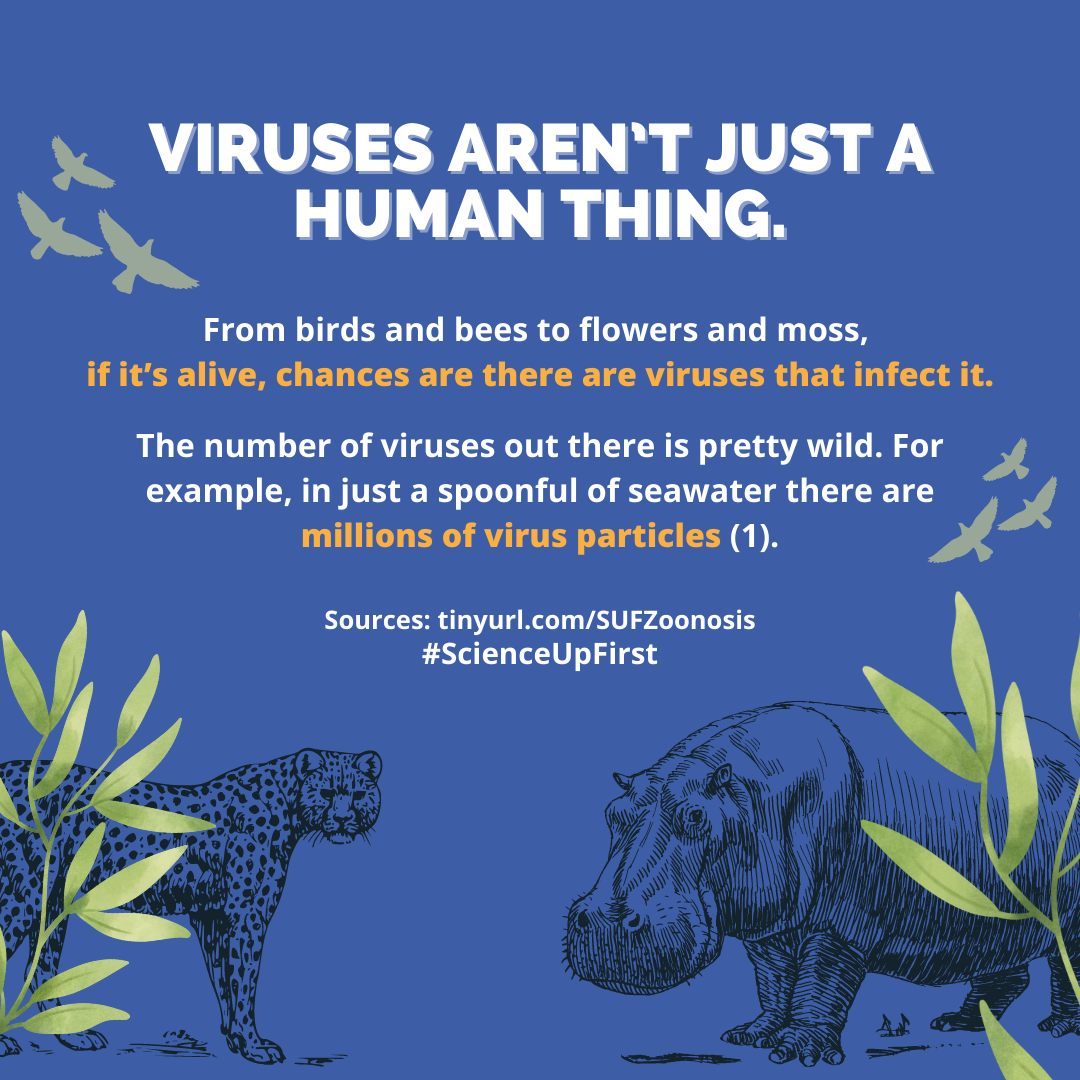
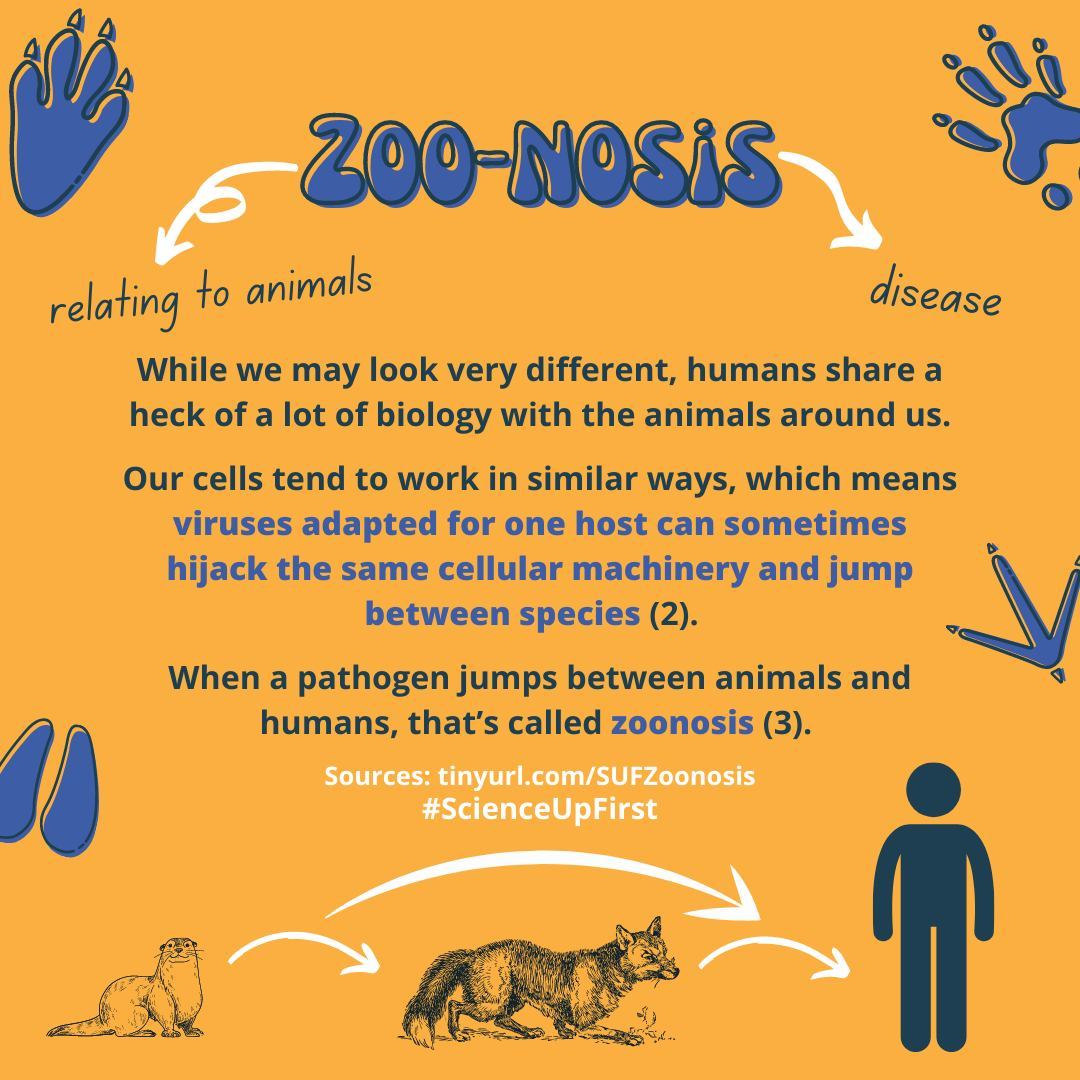
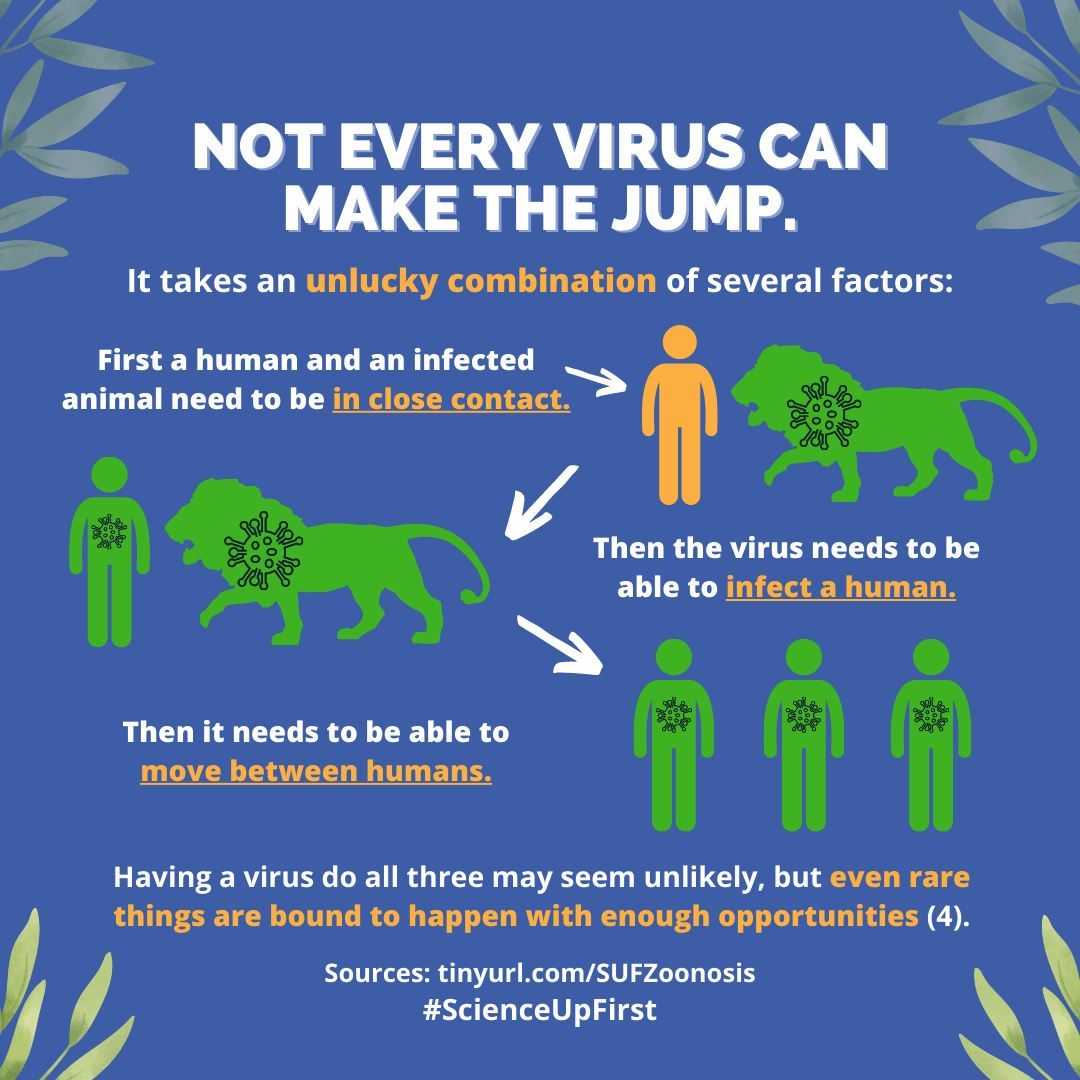
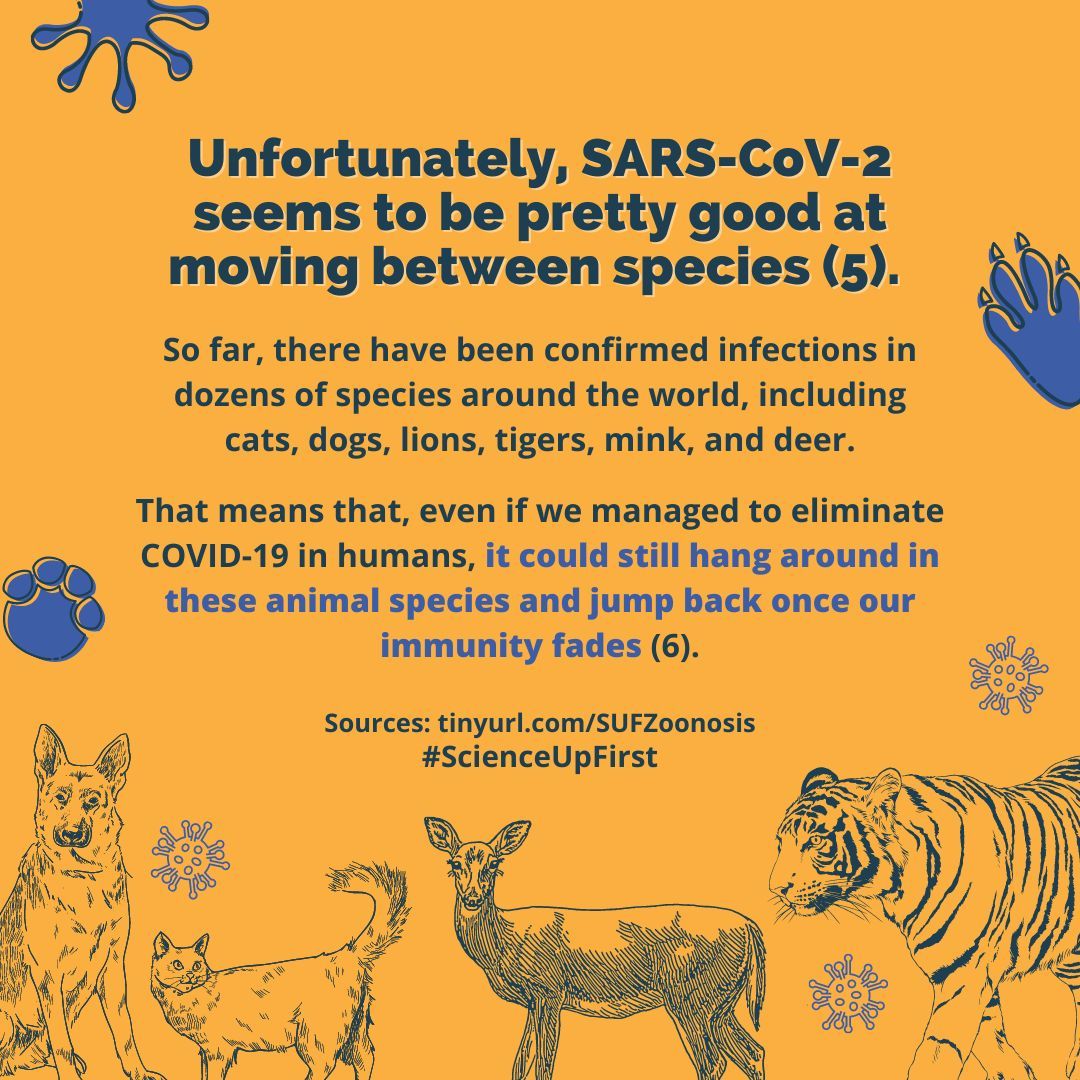
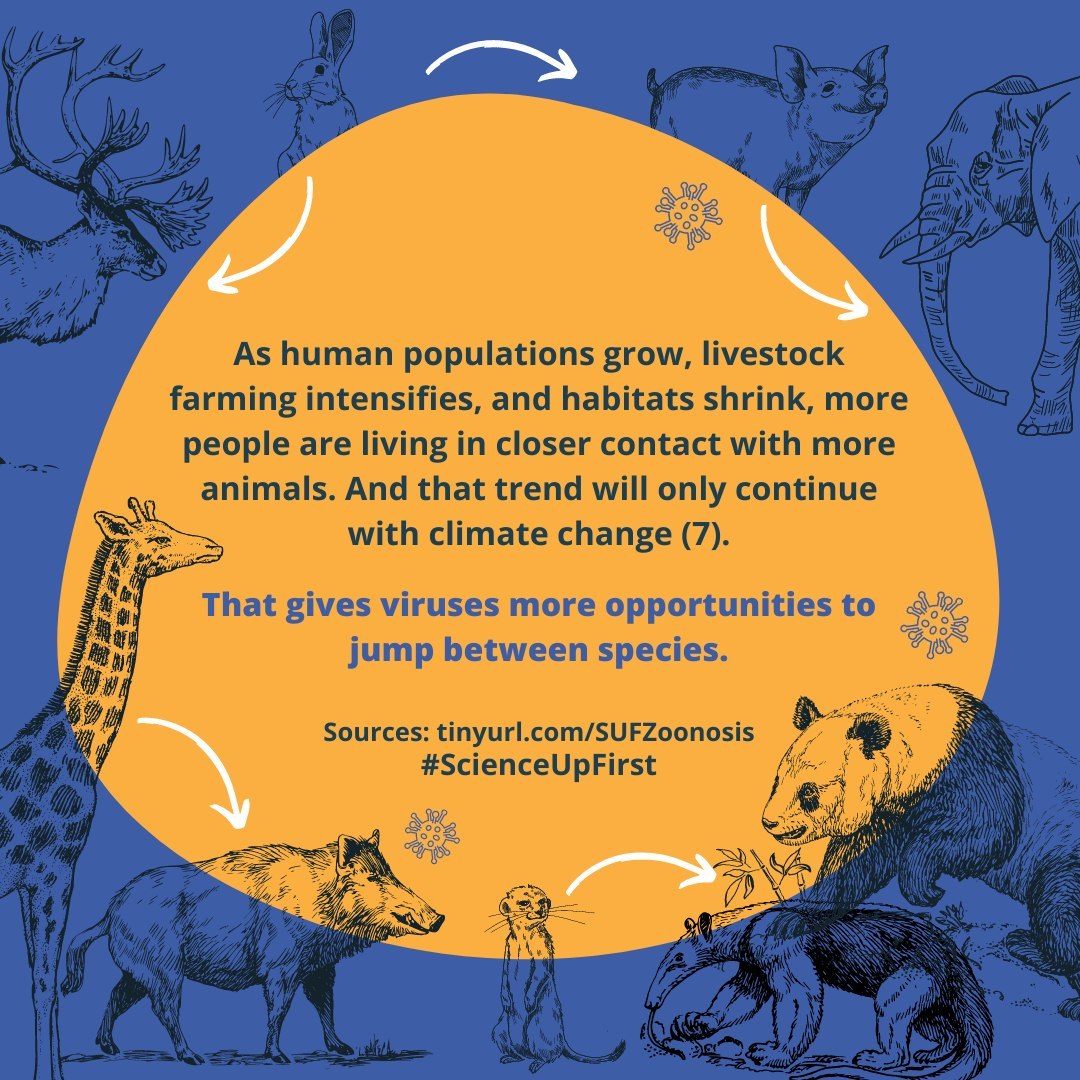
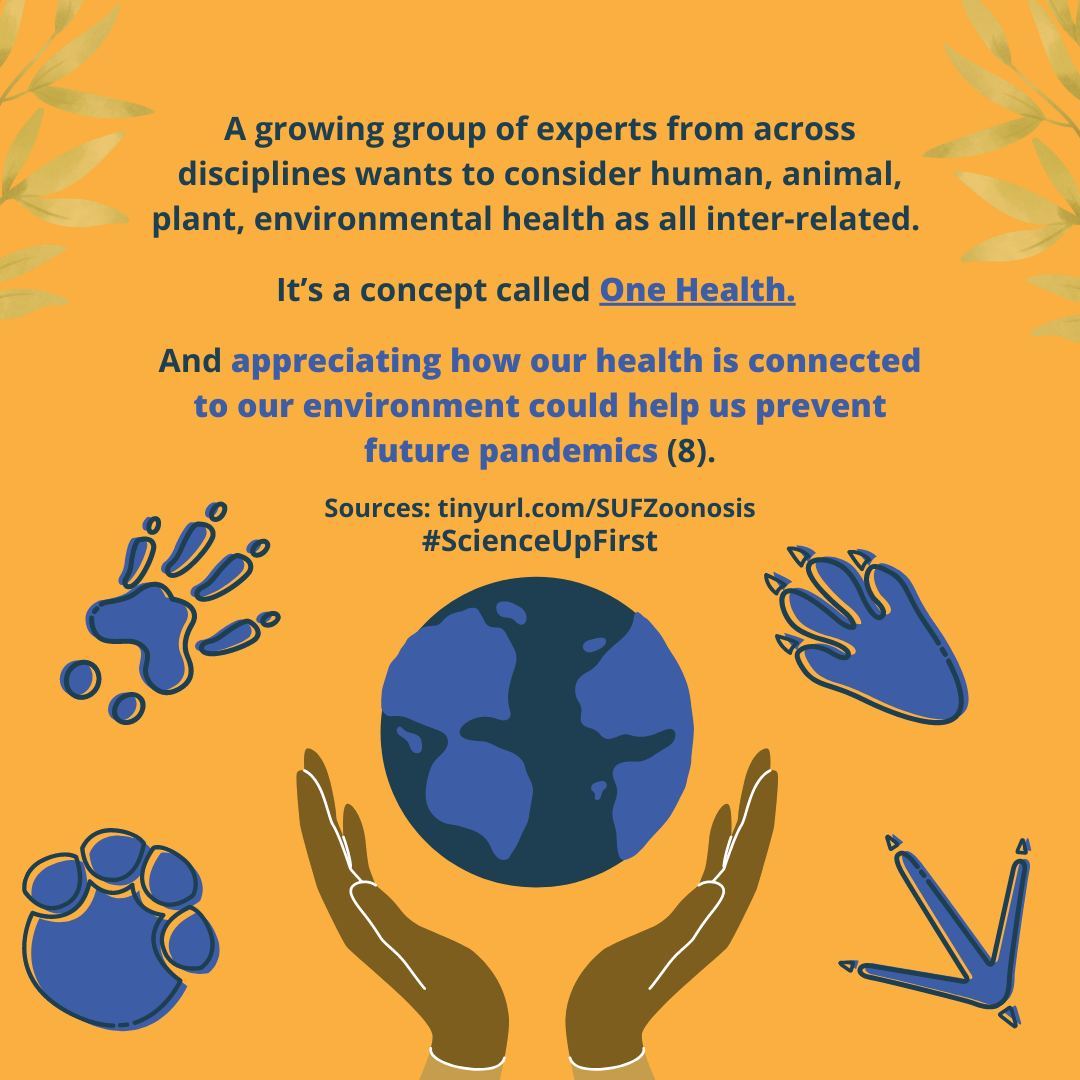
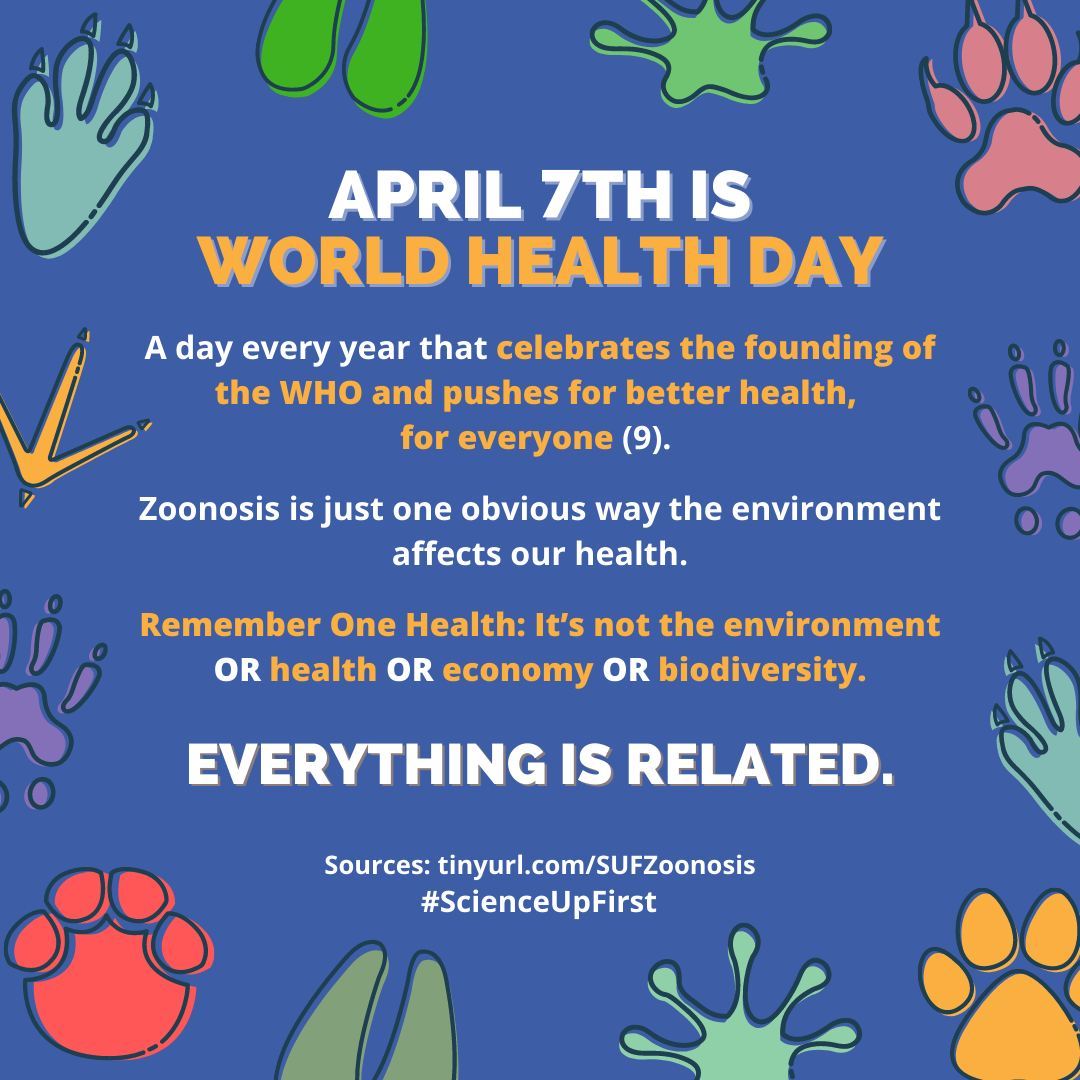
If it’s alive, chances are there are viruses that infect it.
Most viruses are adapted to specific hosts, but we share a lot of biology with animals. So sometimes, viruses jump between species. That’s called zoonosis.
As human populations grow, livestock farming intensifies, and habitats shrink, more people are living in closer contact with more animals. And that trend will only continue with climate change.
That will make zoonosis more likely, and means we need to think about the relationships between environment, animal health, and human health. That’s called One Health.
Share our original Tweet!
Our planet and our health are intricately related.
As the planet warms, farming intensifies, and more people live closer to animals, diseases become more likely to jump species.
Let’s learn about zoonosis for @WHO‘s #WorldHeatlhDay#HealthierTomorrow#ScienceUpFirst
1/12 pic.twitter.com/Yb5XUdd6Ii
— ScienceUpFirst | LaScienced’Abord (@ScienceUpFirst) April 7, 2022
View our original Instagram Post!
View this post on Instagram
- Hundreds of thousands of marine viruses discovered in world’s oceans | Nature
- How host genetics dictates successful viral zoonosis | PLOS Biology
- Zoonoses | WHO
- COVID-19—lessons for zoonotic disease | Science
- COVID-19 – OIE | World Organization for Animal Health
- SARS-CoV-2 Infections in Animals: Reservoirs for Reverse Zoonosis and Models for Study – PMC | Viruses
- One Health Basics | CDC
- Importance of One Health for COVID-19 and Future Pandemics | CDC
- World Health Day 2022 | WHO

